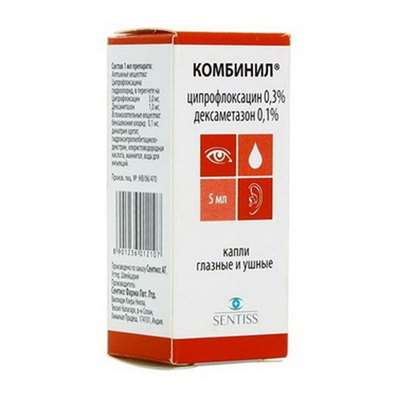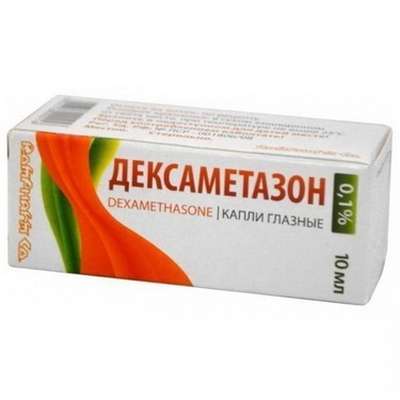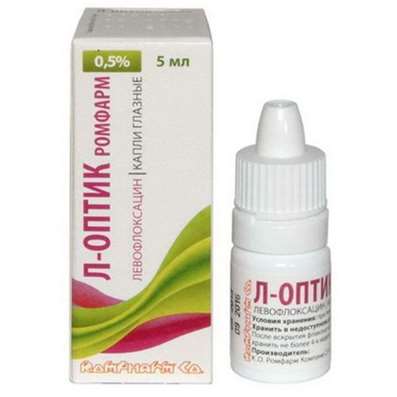Instruction for use: Tenecteplase
I want this, give me price
Trade name of the drug – Metalyse
The Latin name of the substance Tenecteplase
Tenecteplasum (genus. Tenecteplasi)
Gross formula
C2561H3919N747O781S40
Pharmacological group:
Fibrinolytics
CAS Code
105857-23-6
Model clinical-pharmacological article 1
Characteristic. The derivative of the natural tissue activator of plasminogen, modified in three sections.
Pharmacotherapy. Recombinant fibrin-specific plasminogen activator. It binds to the fibrin component of the thrombus and selectively catalyzes the transformation of the thrombosed plasminogen into plasmin, which destroys the fibrin base of the thrombus. In comparison with the natural tissue plasminogen activator, tenecteplase has a higher fibrin affinity and resistance to the inactivating action of the endogenous inhibitor of plasminogen I activator. After the introduction of tenecteplase, a dose-dependent intake of alpha 2-antiplasmin (plasmin inhibitor in the liquid phase) is observed, followed by an increase in the concentration of system plasmin, Which corresponds to the expected effect of plasminogen activation. In comparative studies, patients who received maximal doses of tenecteplase (10,000 AD, equivalent to 50 mg) showed a decrease in fibrinogen concentration of less than 15% and a plasminogen concentration of less than 25%, and the use of alteplase led to a decrease in the concentration of fibrinogen and Of plasminogen by approximately 50%. After 30 days after the beginning of the use of the drug, antibodies to tenecteplase were not detected. A single intravenous injection of tenecteplase promotes recanalization of the artery, because of thrombosis of which acute myocardial infarction developed. This effect is dose-dependent. The use of tenecteplase reduces the death rate from myocardial infarction (by 6.2% after 30 days). When using tenecteplase, the frequency of bleeding (excluding intracranial) is 26.4% (lower than with the use of alteplase - 28.9%,). Therefore, the need for transfusion therapy with the use of tenecteplase is significantly lower (4.3% in the tenecteplase group and 5.5% in the alteplase group). The incidence of intracranial hemorrhage was 0.93% in the tenecteplase group and 0.94% in the alteplase group. In cases where treatment was started later than 6 hours after the onset of symptoms of myocardial infarction, the use of tenecteplase (in comparison with alteplase) had advantages in terms of 30-day mortality (4.3% in the tenecteplase group and 9.6% in the group Alteplazy), the incidence of stroke (0.4% and 3.3%, respectively) and the frequency of intracranial hemorrhages (0% and 1.7%, respectively).
Pharmacokinetics. Tentexteplase is excreted from the bloodstream by binding to receptors in the liver and degradation to form small peptides. After a single administration of tenecteplase in patients with acute myocardial infarction, a two-phase excretion of tenecteplase antigen from plasma was noted. When using the drug in therapeutic doses, there is no dependence of the character of excretion of tenecteplase from the administered dose. The initial T1 / 2 is 24 ± 5.5 min, which is 5 times larger than the T1 / 2 natural tissue plasminogen activator. The final T1 / 2 is 129 ± 87 min; The plasma clearance is 119 ± 49 ml / min. With an increased body weight, there is a moderate increase in plasma clearance, with an increase in age there is a decrease in this indicator. In women, plasma clearance is usually lower than that of men, which may be due to lower body weight in women. Tenecteplase is excreted with bile, so it is assumed that renal dysfunction does not lead to a change in pharmacokinetics. The study of pharmacokinetics in cases of liver failure was not performed.
Indication. Acute myocardial infarction (thrombolytic therapy).
Contraindications. Hypersensitivity, diseases accompanied by significant bleeding during the last 6 months, hemorrhagic diathesis, simultaneous reception of oral anticoagulants (international standardized index more than 1,3), previous history of CNS diseases (neoplasms, aneurysm, surgery on the brain and spinal cord), severe uncontrolled Arterial hypertension, extensive surgical interventions, biopsy of the parenchymatous organ, or significant trauma during the last 2 months (including trauma in combination With acute myocardial infarction at the present time), recent BTT, prolonged or traumatic cardiopulmonary resuscitation (more than 2 min) during the last 2 weeks, severe impairment of liver function, incl. Hepatic insufficiency, cirrhosis, portal hypertension (including varicose veins of the esophagus) and active hepatitis, diabetic hemorrhagic retinopathy, etc. hemorrhagic eye diseases, peptic ulcer or duodenal ulcer in st. Exacerbation, an aneurysm of an artery or presence of an arterial / venous malformation of vessels, a neoplasm with the raised risk of development of a bleeding, an acute pericarditis and / or a subacute bacterial endocarditis, an acute pancreatitis.
Carefully. Systolic blood pressure more than 160 mm Hg, stroke or transient ischemic stroke, recent bleeding from the digestive tract or genitourinary system (within the last 10 days), recently performed an / m injection (within the last 2 days), an elderly Age (over 75 years), body weight less than 60 kg, cerebrovascular disease, pregnancy, lactation.
Dosing. IV, once, for 5-10 seconds.
The dose is calculated depending on the body weight. The maximum dose should not exceed 10 thousand AD (50 mg of tenecteplase).
The volume of solution for the required dose: 6 ml (6 thousand ED or 30 mg of tenecteplase) - with a body weight of less than 60 kg, 7 ml - with a body weight of 60-70 kg (7 thousand ED or 35 mg), 8 ml 8 thousand AD or 40 mg) - with a body weight of 70-80 kg, 9 ml (9 thousand units or 45 mg) - with a body weight of 80-90 kg, 1 ml (10 thousand ED or 50 mg) - with a mass of Body more than 90 kg.
The previously installed catheter for iv administration of only 0.9% NaCl solution can be used to administer tenecteplase. After the administration of the drug, the catheter should be rinsed before further use for administration of other drugs. To administer the drug, do not use a catheter through which dextrose has been administered. Unused solution must be disposed of.
For the effectiveness of therapy with tenecteplase, the use of ASA and heparin is necessary, which should be administered immediately after the diagnosis of acute myocardial infarction to prevent thrombus formation.
The use of ASA should begin immediately after the detection of symptoms of acute myocardial infarction and continue, at least until the patient is discharged from the hospital. The recommended initial dose for oral administration is 150-325 mg / day. If the patient can not swallow the tablets, an initial dose of 150-250 mg ASA can be administered iv. The dose of ASA in the following days is determined by the attending physician.
The administration of heparin must begin immediately after confirmation of the diagnosis of acute myocardial infarction and continue for at least 24 hours. The dose of heparin is calculated depending on the body weight. At a body weight of 67 kg or less, the initial single dose of heparin for IV injection should not exceed 4 thousand AD, followed by infusion of heparin at a rate of 800 U / h, more than 67 kg - 5 thousand AD and 1 thousand. U / h, respectively. Do not administer an initial dose of heparin for IV administration to patients already receiving heparin. The rate of infusion of heparin should be adjusted to maintain the APTT at 50-75 s (1.5-2.5 times the control time or plasma heparin concentration 0.2-0.5 U / ml).
Side effect. Most often - bleeding: external (usually from the sites of puncture of blood vessels); Internal (gastrointestinal, pulmonary, from the genitourinary tract, hemopericardium, hemorrhages in the retroperitoneal space and the brain with the development of appropriate neurologic symptoms, such as inhibition, aphasia, convulsions). In patients with stroke and intracranial hemorrhage, cases of death and persistent disability are described.
Very often (more than 1/10), often (more than 1/100 and less than 1/10), infrequently (more than 1/1000 and less than 1/100), rarely (more than 1/10 000 and less than 1/1000).
From the nervous system: infrequently - intracranial hemorrhage.
From the CVS: very often - reperfusion arrhythmias, bleeding from the vessels, often - ecchymoses, infrequently - thromboembolism, rarely - hemopericard.
On the part of the respiratory system: often - nosebleeds, infrequently - pulmonary hemorrhage.
From the digestive system: often - gastrointestinal bleeding, nausea, vomiting, infrequently - bleeding into the retroperitoneal space.
On the part of the genitourinary system: often - bleeding from the genito-urinary tract.
Other: very often - external bleeding, usually from puncture sites or from damaged blood vessels.
Reactions identified in special studies: very often - a reduction in blood pressure, often - an increase in body temperature.
Damage, toxic effects and complications due to procedures associated with the use of the drug: infrequently - anaphylactoid reactions (including rash, urticaria, bronchospasm, laryngeal edema), very rarely - embolism with cholesterol crystals.
Surgical and therapeutic procedures: often - the need for blood transfusion.
Overdose. Symptoms: bleeding.
Treatment: in case of prolonged significant bleeding, a blood transfusion may be required.
Interaction. There is no evidence of clinically significant interactions of tenecteplase with other drugs, often used in patients with acute myocardial infarction.
Drugs that alter the coagulation properties of the blood, and also affect the function of platelets, may increase the risk of bleeding if they are used before, at the same time, or after the appointment of tenecteplase.
Incompatible with solutions of dextrose. Do not mix with other drugs.
Special instructions. The drug should be administered by a doctor who has experience with thrombolytic therapy and the ability to monitor its effectiveness. This does not exclude the possibility of using tenecteplase at the prehospital stage. It is recommended to administer the drug in conditions when standard resuscitation equipment and drugs are available.
Bleeding is the most common complication when using the drug. The simultaneous use of heparin may contribute to bleeding. After the dissolution of fibrin as a result of the use of tenecteplase, bleeding can occur in places of recently performed punctures and injections. Therefore, thrombolytic treatment requires careful monitoring of the zones of possible bleeding (including the site of insertion of the catheter, arterial and venous punctures, incisions and injections). Avoid the use of rigid catheters, intravenous injections and unreasonable manipulations during treatment.
In case of serious bleeding, in particular, intracranial hemorrhage, simultaneous administration of heparin should be stopped immediately. It should be remembered about the possibility of administering a protamine if heparin was administered within 4 hours before bleeding occurred. In rare cases, when listed conservative treatment measures are ineffective, rational administration of transfusion drugs can be indicated. Transfusion administration of cryoprecipitate, fresh-frozen plasma and platelets can be prescribed in accordance with clinical and laboratory parameters, determined repeatedly after each administration. Infusion of cryoprecipitate is desirable to be carried out until the concentration of fibrinogen is about 1 g / l. It is also possible to use antifibrinolytic agents.
Coronary thrombolysis can be accompanied by the occurrence of arrhythmia associated with reperfusion.
Experience with the use of antagonists of glycoprotein llb / llla during the first 24 hours after the initiation of treatment is absent.
The use of tenecteplase may be accompanied by an increased risk of thromboembolic complications in patients with thrombosis of the left heart, incl. With mitral stenosis or atrial fibrillation.
The formation of antibodies to the tenecteplase molecule after treatment was not revealed, however, there is no experience of repeated use of tenecteplase.
Experience with the drug in pregnant women is absent. There is no data on excretion of tenecteplase with breast milk. It is necessary to correlate the degree of possible risk and the intended benefit in prescribing the drug in the case of development of acute myocardial infarction during pregnancy and lactation.
The physical and chemical properties of the prepared solution are stable for 24 hours at a temperature of 2-8 ° C and for 8 hours at a temperature of 30 ° C. From a microbiological point of view, the solution should be used immediately after preparation. If the solution has not been used immediately, the period and conditions of its storage before use go under the responsibility of the doctor prescribing the drug.

 Cart
Cart





